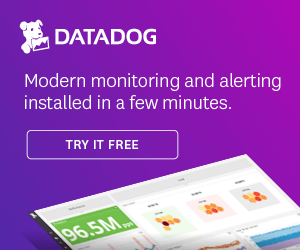1. Introduction
In the digital age, data centers are the backbone of modern IT infrastructure, supporting everything from cloud computing to big data analytics. As organizations increasingly rely on data-driven decision-making, the importance of effective data center capacity planning cannot be overstated. Capacity planning involves predicting future resource requirements to ensure that data centers operate efficiently and can accommodate growth. However, traditional methods of capacity planning often fall short, leading to over-provisioning or under-utilization of resources. This is where field intelligence comes into play. By leveraging real-time data and advanced analytics, organizations can enhance their capacity planning processes, optimize resource management, and ensure that data centers meet current and future demands.
2. Understanding Data Center Capacity Planning
Data center capacity planning is the process of determining the necessary resources—such as computing power, storage, and network bandwidth—required to support an organization’s operations. Effective capacity planning involves several key components:
Demand Forecasting: Predicting future resource needs based on historical usage patterns, business growth, and technological advancements.
Resource Allocation: Distributing available resources to meet current demands while planning for future growth.
Performance Monitoring: Continuously tracking resource utilization and performance metrics to identify potential bottlenecks and areas for improvement.
Cost Management: Evaluating the financial implications of capacity decisions, including the costs associated with over-provisioning or under-utilization.
Effective capacity planning is essential for ensuring that data centers operate at optimal efficiency, minimize downtime, and reduce operational costs.
3. The Challenges of Traditional Capacity Planning
Traditional capacity planning methods often rely on historical data and static models, which can lead to several challenges:
3.1 Inflexibility
Static models may not account for sudden changes in demand, such as unexpected spikes in traffic or the introduction of new applications. This inflexibility can result in either over-provisioning, leading to wasted resources and costs, or under-provisioning, resulting in performance degradation and potential downtime.
3.2 Lack of Real-Time Insights
Many traditional capacity planning approaches do not provide real-time visibility into resource utilization. Without up-to-date information, organizations may struggle to make informed decisions about resource allocation and planning.
3.3 Difficulty in Predicting Growth
Accurately forecasting future growth can be challenging, particularly in rapidly changing industries. Organizations may find it difficult to anticipate the impact of new technologies, market trends, and customer demands on their resource requirements.
3.4 Siloed Data
Capacity planning often involves data from multiple sources, including IT systems, business applications, and external factors. Traditional methods may struggle to integrate this data effectively, leading to incomplete or inaccurate assessments of resource needs.
4. The Role of Field Intelligence in Capacity Planning
Field intelligence refers to the use of real-time data and advanced analytics to inform decision-making and optimize operations. In the context of data center capacity planning, field intelligence can enhance the planning process in several ways:
4.1 Real-Time Monitoring and Analytics
Field intelligence enables organizations to monitor resource utilization in real-time, providing insights into how resources are being used at any given moment. This real-time visibility allows for more accurate demand forecasting and resource allocation.
4.2 Predictive Analytics
By leveraging historical data and machine learning algorithms, organizations can develop predictive models that anticipate future resource needs. These models can account for various factors, such as seasonal trends, business growth, and technological changes, allowing for more accurate capacity planning.
4.3 Automated Reporting
Field intelligence tools can automate the collection and analysis of data, reducing the time and effort required for capacity planning. Automated reporting provides stakeholders with timely insights, enabling them to make informed decisions quickly.
4.4 Enhanced Collaboration
Field intelligence fosters collaboration among teams by providing a centralized platform for data sharing and communication. This collaboration ensures that all stakeholders have access to the same information, promoting alignment and informed decision-making.
5. Implementing Field Intelligence in Capacity Planning
To effectively implement field intelligence in data center capacity planning, organizations should consider the following steps:
5.1 Define Objectives and Key Metrics
Organizations should start by defining their capacity planning objectives and the key metrics they will use to measure success. This may include metrics such as resource utilization rates, performance benchmarks, and cost efficiency.
5.2 Invest in Data Collection Tools
Implementing field intelligence requires robust data collection tools that can gather real-time information from various sources. This may include monitoring software, sensors, and analytics platforms that can provide insights into resource utilization and performance.
5.3 Leverage Predictive Analytics
Organizations should invest in predictive analytics tools that can analyze historical data and generate forecasts for future resource needs. These tools can help organizations anticipate changes in demand and optimize resource allocation accordingly.
5.4 Foster a Data-Driven Culture
To maximize the benefits of field intelligence, organizations should foster a data-driven culture that encourages employees to leverage data for decision-making. This may involve training programs, workshops, and initiatives that promote data literacy across the organization.
5.5 Continuously Monitor and Adjust
Capacity planning is an ongoing process that requires continuous monitoring and adjustment. Organizations should regularly review their capacity planning strategies, analyze performance metrics, and make necessary adjustments to ensure optimal resource management.
6. The Benefits of Field Intelligence in Capacity Planning
Integrating field intelligence into data center capacity planning offers several key benefits:
6.1 Improved Resource Utilization
By leveraging real-time data and predictive analytics, organizations can optimize resource allocation and utilization. This leads to more efficient use of resources, reducing waste and operational costs.
6.2 Enhanced Agility
Field intelligence enables organizations to respond quickly to changes in demand, allowing for more agile capacity planning. This agility is crucial in today’s fast-paced business environment, where organizations must adapt to evolving market conditions.
6.3 Better Decision-Making
Access to real-time insights and predictive analytics empowers stakeholders to make informed decisions about resource allocation and capacity planning. This leads to more strategic planning and improved overall performance.
6.4 Reduced Downtime
By accurately forecasting resource needs and identifying potential bottlenecks, organizations can minimize the risk of downtime. This reliability is essential for maintaining service levels and ensuring customer satisfaction.
6.5 Cost Savings
Optimizing resource utilization and reducing waste can lead to significant cost savings for organizations. By implementing field intelligence in capacity planning, organizations can achieve a more cost-effective approach to data center management.
7. Real-Time Statistics on Data Center Capacity Planning
Recent statistics highlight the importance and impact of effective capacity planning in data centers:
According to a report by Gartner, 80% of organizations will have implemented a formal capacity planning process by 2025, recognizing its critical role in optimizing IT resources.
A survey by the Uptime Institute found that 70% of data center operators consider capacity planning a top priority for improving efficiency and reducing operational costs.
The global data center market is expected to reach $174 billion by 2023, driven by the increasing demand for cloud services and the need for efficient capacity planning.
These statistics underscore the growing recognition of the importance of effective capacity planning in data center operations.
8. Future Trends in Data Center Capacity Planning
The future of data center capacity planning is likely to be shaped by several emerging trends:
8.1 Increased Automation
As technology continues to advance, organizations will increasingly rely on automation to streamline capacity planning processes. Automated tools will enable real-time monitoring, reporting, and predictive analytics, reducing the manual effort required for capacity planning.
8.2 Adoption of Edge Computing
The rise of edge computing is changing the landscape of data center capacity planning. Organizations will need to consider how to allocate resources across distributed edge devices and traditional data centers to meet the demands of real-time applications.
8.3 Integration of AI and Machine Learning
The integration of artificial intelligence and machine learning into capacity planning processes will enhance predictive analytics capabilities. These technologies will enable organizations to analyze vast amounts of data and generate more accurate forecasts for future resource needs.
8.4 Focus on Sustainability
As organizations prioritize sustainability, data center capacity planning will increasingly consider environmental impact. Organizations will seek to optimize resource usage and minimize energy consumption, aligning capacity planning with sustainability goals.
8.5 Enhanced Collaboration Across Teams
The future of capacity planning will see greater collaboration between IT, operations, and business teams. A holistic approach to capacity planning will ensure that all stakeholders are aligned and informed, leading to more effective resource management.
9. Conclusion
Data center capacity planning is a critical component of effective IT management, ensuring that organizations can meet current and future demands while optimizing resource utilization. Traditional methods of capacity planning often fall short, leading to inefficiencies and increased costs. However, by leveraging field intelligence, organizations can enhance their capacity planning processes, improve resource management, and achieve greater agility in responding to changing demands.
As technology continues to evolve, the integration of real-time data, predictive analytics, and automation will shape the future of capacity planning. Organizations that embrace these innovations will be better positioned to navigate the complexities of modern data center management and drive business success.
In conclusion, the role of field intelligence in data center capacity planning cannot be overstated. By adopting a data-driven approach and leveraging advanced analytics, organizations can optimize their capacity planning processes, reduce costs, and ensure that their data centers are equipped to meet the challenges of the future.





